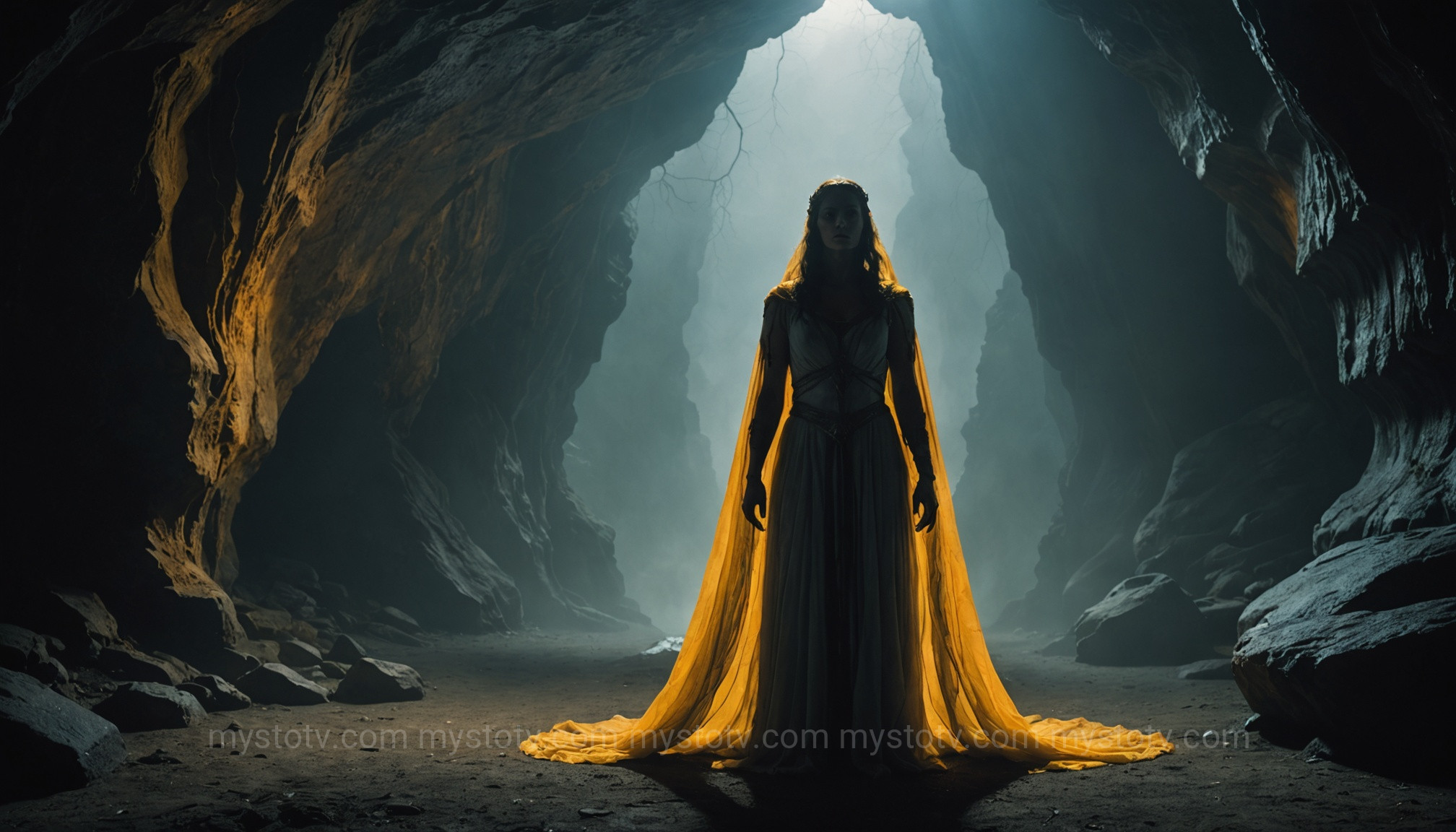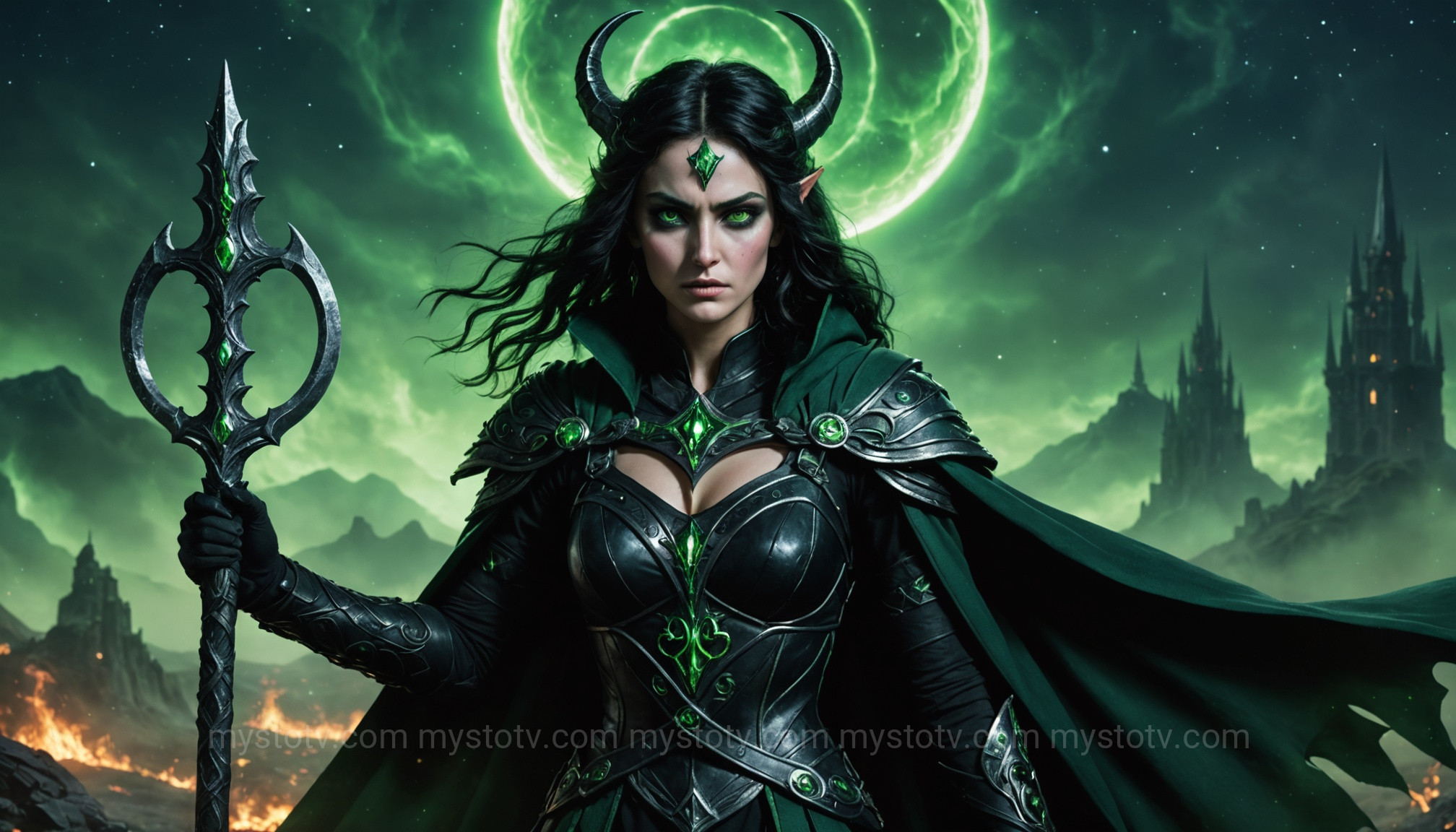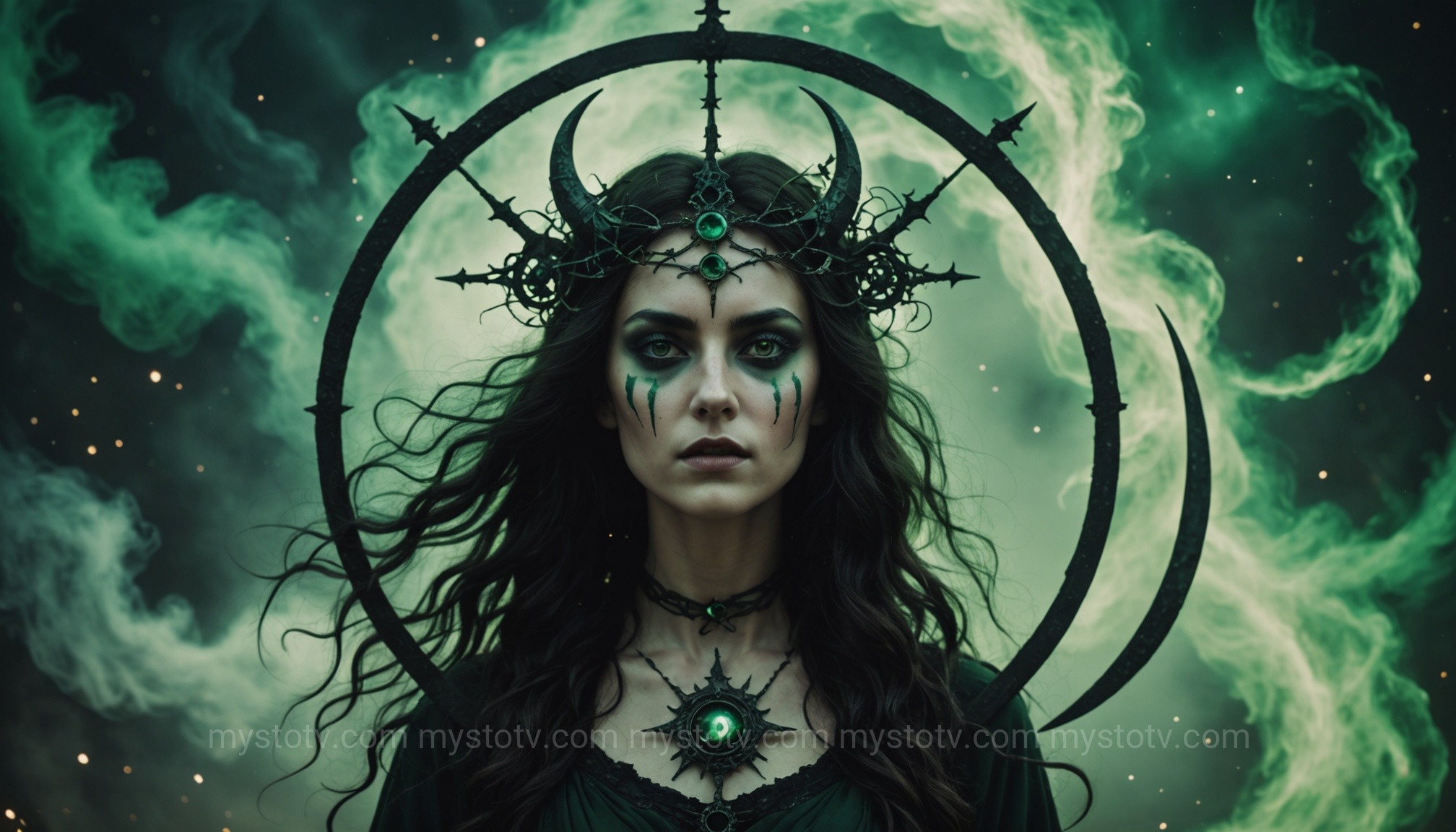When Supergiant Games dropped the reveal trailer for Hades II, the collective gasp from the gaming community was audible. After sinking countless hours into escaping the Underworld as Zagreus, I, like many others, was ready for more. But the biggest surprise wasn’t the sequel itself; it was the new protagonist. She was a witch, a princess, and a figure I’d honestly never heard of. A quick search revealed her identity: the Melinoe goddess. This wasn't a well-trodden hero like Hercules or Perseus. It was a deep cut from the corners of Greek mythology, a name whispered in a single ancient hymn. This discovery sparked an immediate fascination. Who was this mysterious goddess, and why was she chosen to carry the legacy of one of the most beloved games of all time? The answer lies in a fascinating blend of obscure myth and brilliant creative interpretation.
Contents
- 1 Who is the Melinoe Goddess in Ancient Greek Mythology?
- 2 The Orphic Hymns: Our Primary Source for the Melinoe Goddess
- 3 The Melinoe Goddess in Hades II: Supergiant's Creative Interpretation
- 4 Symbolism and Powers of the Melinoe Goddess
- 5 Why the Melinoe Goddess is the Perfect Protagonist for Hades II
- 6 Frequently Asked Questions (FAQ)
- 7 References
Who is the Melinoe Goddess in Ancient Greek Mythology?

In the vast and crowded pantheon of Greek gods and spirits, the Melinoe goddess is a truly elusive figure. Unlike the Olympians whose tales were sung by poets and carved into temples, Melinoe (Μηλινόη) exists almost entirely within the confines of a single text. She is a chthonic deity, a spirit of the Underworld, whose primary role is tied to the night, ghosts, and the unsettling fears that creep into the minds of mortals.
Her obscurity is, in fact, one of her most defining features. She doesn't appear in Homer's epics or Hesiod's Theogony, the foundational texts of Greek myth. Instead, her story comes from a later, more mystical tradition known as Orphism. This lack of a broad mythological footprint makes her a figure of immense potential, a blank slate defined by a few powerful, terrifying characteristics. She represents a deeper, more mysterious side of Greek belief, far from the sunlit dramas of Mount Olympus and rooted in the primal fears of darkness and the dead.
The Orphic Hymns: Our Primary Source for the Melinoe Goddess
To truly understand the mythological basis for the Melinoe goddess, we must turn to the Orphic Hymns, a collection of 87 poems composed likely between the 2nd and 3rd centuries AD. These hymns were part of the secret rites of Orphism, a mystery religion that held different beliefs about the origins of the gods and the afterlife than mainstream Greek religion. It is in Hymn 71 that Melinoe makes her sole, dramatic appearance.
A Complicated and Controversial Parentage
The hymn describes a dramatic and troubling origin for the Melinoe goddess. She is named as the daughter of Persephone, Queen of the Underworld. However, her father's identity is complex. The hymn states she was fathered by Zeus, who, in a "wily guise," tricked Persephone by taking on the form of her husband, Hades (referred to by his other name, Plouton).
"I call, Melinoe, saffron-veiled, terrestrial, who from Phersephone dread venerable sprang, from Plouton’s sacred bed, by Kronian Zeus beguiled..."
This duality of parentage is central to her nature. She is born of an Olympian sky-father (Zeus) and a chthonic mother (Persephone), and her conception is tied to both the ruler of Olympus and the King of the Underworld. This places her in a liminal space, belonging to both realms yet fully at home in neither. This is a recurring theme that both the myth and Hades II explore.
Her Terrifying Appearance and Domain
The Orphic Hymn paints a frightening picture of the Melinoe goddess. It describes her as having a body that is half-black and half-white, a direct physical manifestation of her divided parentage and nature. This striking image symbolizes her connection to both the light of Olympus and the darkness of the Underworld.
Her domain is equally unnerving. The hymn states she brings "nightly terrors to mortals," driving them to madness with "airy phantoms." She is a goddess of nightmares, restless spirits, and ghosts (phantasma). She wanders the night with a retinue of the dead, a terrifying specter whose appearance is a source of fright and insanity. The name 'Melinoe' itself is often interpreted as "dark-minded" or, alternatively, "honey-colored," which could refer to the pale yellow (saffron) of her veil or the pallor of corpses.
Analysis: The Dual Nature of the Melinoe Goddess
The hymn's portrayal of the Melinoe goddess is not just a monster description; it's a sophisticated theological concept. Her duality is her essence. She embodies the Greek understanding that boundaries—between light and dark, life and death, sanity and madness—are permeable. Her existence is a result of a violation of these boundaries, and her purpose is to manifest that very instability. She isn't simply evil; she is a cosmic force of ambiguity, a reminder of the hidden things that lurk just beyond mortal perception.
The Melinoe Goddess in Hades II: Supergiant's Creative Interpretation

While the myth provides a potent foundation, Supergiant Games has taken this fragment and expanded it into a full-fledged hero. The Melinoe goddess of Hades II is not just a bringer of nightmares but a powerful warrior and witch, the "Princess of the Underworld." This adaptation is a masterclass in honoring source material while building something new and compelling.
Her Mission: Defeating the Titan of Time
In Hades II, the stakes are raised beyond personal escape. Melinoe's objective is to confront and defeat Chronos, the Titan of Time, who has escaped his imprisonment in the depths of the Underworld and captured her family. This narrative choice transforms her. The mythological figure who causes fear becomes a hero who must conquer it. She is no longer just a specter haunting mortals but the Underworld's primary defense against a primordial threat, giving her a clear, heroic purpose.
Embracing Witchcraft and Hecate
Perhaps the biggest creative addition to the Melinoe goddess is her explicit connection to witchcraft. The trailer and gameplay reveals show her as a practitioner of magic, mentored by Hecate, the goddess of magic, witchcraft, and crossroads. This is a brilliant narrative choice. Hecate is another major chthonic deity closely associated with Persephone and the moon. By making Hecate Melinoe's mentor, Supergiant creates a logical and powerful link that grounds Melinoe's new abilities within established mythology. Her powers are lunar-themed, and her primary weapons include a sickle and a staff, classic implements of witchcraft.
How Hades II Reimagines the Melinoe Goddess
Supergiant's interpretation keeps the core concept of duality but re-frames it. Her mythological black-and-white limbs are reimagined as striking heterochromia—one eye green, the other a starry black. Her ghostly nature is translated into potent magical abilities. The fear she once inspired is now the power she wields. She is still a liminal figure, training in a place between worlds (the Crossroads) and fighting a war that spans time itself. The game takes the eerie essence of the Melinoe goddess and empowers her with agency, purpose, and a captivating set of skills that promise a fresh gameplay experience.
Symbolism and Powers of the Melinoe Goddess

The power of the Melinoe goddess, both in myth and in the game, comes from her rich symbolism. These symbols define her character and her function in the story.
Duality and Liminality
This is her core symbol. From her black-and-white form in the Orphic Hymn to her heterochromia in Hades II, she is defined by her "in-between" status. She is the living embodiment of the threshold: between Olympus and the Underworld, light and dark, life and death. This makes her uniquely suited to tasks that require moving between realms, a central mechanic in the Hades universe. Her very being symbolizes the union of opposites.
Nightmares, Ghosts, and Magic
In myth, her power is passive—she causes nightmares. In the game, this is an active power. She controls and wields the forces that mortals fear. Her attacks have a spectral, magical quality, suggesting she commands the very phantoms the hymn describes. This evolution from a source of fear to a wielder of dark power is a key part of her heroic journey. It is her connection to these ephemeral, frightening concepts that gives her a unique strength that even other gods may lack.
The Moon as a New Symbol
Hades II heavily associates the Melinoe goddess with the moon, a symbol not explicitly present in the original hymn but a perfect fit. The moon governs the night, cycles, and hidden knowledge—all domains that align with Melinoe and her mentor, Hecate. Lunar magic provides a distinct visual and thematic identity for her powers, contrasting sharply with Zagreus's more fiery and blood-based abilities. This addition enriches her character, tying her to a broader tradition of witchcraft and nocturnal power.
Why the Melinoe Goddess is the Perfect Protagonist for Hades II
The choice of the Melinoe goddess as the new protagonist is not just novel; it's a stroke of genius for several reasons. Firstly, it builds on the established themes of family dysfunction from the first game but offers a completely different dynamic. We move from a son trying to escape a complicated father to a daughter fighting to save her entire family, including the father-figure Hades. This explores her complex family ties from a new, proactive perspective.
Secondly, her relative obscurity provides immense creative freedom. Unlike a major figure like Athena or Apollo, Melinoe is not burdened by centuries of conflicting portrayals. Supergiant Games can flesh out her personality, motivations, and relationships, defining her for a new generation while staying true to her mysterious, mythological core. They can build a legend rather than just retelling one.
Finally, her inherent connection to witchcraft and magic opens up exciting new gameplay possibilities. While Zagreus was primarily a weapons-based brawler, Melinoe's skillset promises a more strategic, magic-focused combat system. This ensures that Hades II will not be a mere retread of its predecessor but a genuine evolution, with the unique nature of the Melinoe goddess at its very heart.
Frequently Asked Questions (FAQ)
Is Melinoe from Greek mythology real?
Yes, the Melinoe goddess is a real figure from Greek mythology, but she is very minor. Her only known ancient appearance is in a single poem, Hymn 71 of the Orphic Hymns, where she is described as a chthonic goddess who brings nightmares and madness to mortals.
Who are the parents of the Melinoe goddess?
According to the Orphic Hymn, her mother is Persephone. Her parentage is dualistic: she was conceived by Zeus, who had taken the form of Persephone's husband, Hades (Plouton). Therefore, she is the daughter of both Zeus and Persephone, and intrinsically linked to both the Underworld and Olympus.
Is Melinoe Zagreus' sister?
In the context of the Hades video game universe, yes. She is presented as the sister of Zagreus. Since Zagreus is the son of Hades and Persephone in the game's canon, and Melinoe is their daughter, they are siblings. In classical mythology, their relationship is more ambiguous as both are obscure figures with conflicting origins, but Supergiant Games has solidified them as brother and sister.
References
- Athanassakis, A. N., & Wolkow, B. M. (2013). The Orphic Hymns. Johns Hopkins University Press. (Hymn 71 to Melinoe).
- Theoi Project. (n.d.). Melinoe. Retrieved from https://www.theoi.com/Khthonios/Melinoe.html
- Supergiant Games. (n.d.). Hades II FAQ. Retrieved from
From a terrifying footnote in a single ancient hymn to the hero of a highly anticipated game, the journey of the Melinoe goddess is a remarkable one. She represents the perfect fusion of myth and modernity—a character with deep, eerie roots in the Greek conception of the Underworld, now reimagined as a powerful witch fighting to save it. Her duality, her connection to magic, and her compelling new mission make her a fascinating figure to unravel. As we await the chance to guide her through the challenges that Chronos presents, one thing is clear: the age of the forgotten gods is over, and the time of the Melinoe goddess has just begun.